After four years of research and writing I’m happy to be able to share my thesis – a theoretical and practical exploration of the meaning of sustainability and the possibilities for envisioning and embodying a different kind of cultural narrative than one which says the future is an updated version of the past. Many of the thoughts, conversations and readings that make up the empirical material has been shared via PatternWhichConnects and this blog, so it feels appropriate to post the Prologue to the thesis here. Thinking back to those days of writing in the summerhouse it strikes me how utterly impossible it is to know where the future takes us. And a core message of the thesis is exactly that to be able deal with the uncertainty of the future it is necessary to look at the present and how response-able we are to change – instead of frantically trying to control the outcome of many more variables than we can ever hold in our minds at once. You can access the whole work here at refiguring.net, where I will take most of my future writings on the topics I’ve so far dealt with here.
This morning a Chaffinch made its way into my dissertation. I have arrived in the summerhouse on Draget in Thy, Denmark, where I will write the three empirical chapters about my research with the Dark Mountain Project. I got up four hours after the sun, sleeping out chaotic events in a dreamless night. I took up my morning ritual of greeting the sun and sitting still breathing before I went out onto the porch to lie in the sun for a few minutes. The Chaffinch landed in a tree a few meters away and sat there observing me, calling “tchuii… tchuii…”, its language an unknown mystery to me. Because I know it is a language, I can learn it if I listen well and maybe one day I will (apparently the Chaffinch has thirteen kinds of song) but for now, I just lie there with closed eyes letting its song reverberate through my body and mind. I recall a dream I once had about being a whale. It ended with waking myself up in laughter and bursting into tears when I realised I was human. The son of a species which has nearly forgotten its ability to hear the languages of other life forms and so render them voiceless and powerless. The weight of generations who spoiled the habitats of whales and peoples, the end product of a lineage whose roots in the wilds beyond civilisation have been hacked up and buried. Waking up I realised first I existed in a place, my friends still sleeping quietly in the other end of the room. Only moments later did I remember I was not just any human being, I was me. The brother of a sister. A person with a social security number, an accumulating debt and a privileged education. I was also me.
Do you know the language of the Chaffinch? I only just learned its name today, I had to look it up in an old copy of Lademann’s Nature Guide. This book tells me it is a common bird in Denmark and most of Europe. I search my memory for encounters with a Chaffinch or its song but I’m blank. I remember its name but not its blue-green and red-brown hues. I’m baffled by my own ignorance, this is one of the most common birds in Denmark. How many kinds of birds do I really know? How many plants and how many of their uses? Bernie Krause is a musician who has spent 40 years recording and archiving the soundscape of wild places for his Wild Sanctuary project(1), and his experience of the changes he has heard over four decades of listening to the wild is described in these terms:
“A great silence is spreading over the natural world even as the sound of man is becoming deafening. Little by little the vast orchestra of life, the chorus of the natural world, is in the process of being quietened. There has been a massive decrease in the density and diversity of key vocal creatures, both large and small” (Vidal, 2012, na.).
The diversity of life is diminishing on a scale that is almost too vast to fathom(2) but because we cannot hear it and see it we tend to talk about it mostly by citing statistics and scientific reports. We may claim to apprehend the numbers as loss but do we really know that in a way that we sense it too? If we did, I imagine we would break into tears spontaneously as I did awakening from my dream of being a whale.
Whistling a badly imitated “schuii schuii”, I went back inside and made breakfast. “Tchuii… tchuii…” the song is resounding in my mind as I go through the day’s online tasks and check what ‘bogfinke’ is in English. Chaffinch. It is a common bird in Britain too. How can we ‘represent’ other species in our democratic systems if we do not learn their languages and really listen to what they are saying? We neatly lump millions of unique living creatures into the category of ‘environment’ and then we treat that category as a resource, a form of ‘capital’ which provides us with ‘services’. Within that logic if the Chaffinch should go extinct tomorrow it would register only as a number: -1 (maybe with some kind of multiplier if other species were dependent on it). It is this logic that has led to the increasing silence Krause is hearing. If I had not learned its song today, the Chaffinch would be just that to me, a number. Its loss would have been as intangible to me as the disappearance of the Great Auk, the Eurasian Aurochs, the Caucasian Wisent or the Tarpan. It is said that ignorance is bliss but I feel my ignorance as a knot in my stomach pushing up against my windpipe.
By the time I have turned this morning’s encounter into writing it is already afternoon. I walk down to the fjord and stand there for a moment watching a sunbeam breaking through the clouds, its fire lighting up the waves which the wind has whisked white. The beam travels towards me and embraces me. That word comes to mind again. Teeming. It is strange how one word can capture so many lived moments, this one briefly transporting me back to Illulisat in Greenland(3). As I pass a groyne I see a collection of stones lying on one of the rocks. I wonder whether someone put them there or if the sea had arranged them so. I can’t make it out. As I get closer I recognise a heart-shape, there’s my answer. I remember something I read in The Old Ways by Robert Macfarlane: “We think in metaphors drawn from place and sometimes those metaphors do not only adorn our thought, but actively produce it” (Macfarlane, 2012, p. 26). As I walk back towards the summerhouse I think of Vanessa and her travels in Central America, she gave me The Old Ways for my thirtieth birthday. Then she calls! I had forgotten that I had logged onto Skype on my phone.
I have sought aloneness here by the fjord but I am not lonely. If I feel lonely my friends are no further away than the push of a button. I wonder about the mixed blessing of virtual networks. Are we strong enough to not let our attention fragment by all the information that gets hurled at us online and can we use our connectedness wisely to build stronger relationships offline? I certainly would not be without them. In the evening I speak with my family on Skype and my niece gives me ‘kisses’ across the physical distance and thereby smears my dad’s iPad in yoghurt. Dark Mountain could not have happened in the way it has if it was offline. My research would have been radically different if it had been purely offline. But at the same time virtual reality can steal away our attention if we are not careful, I’ve experienced this with myself, my friends and my family. And the danger is that the internet becomes just another prison that amplifies our deafness to the natural world: “The fragmentation of attention diminishes the quality of our presence, and we are never fully in one place. Without attention we are lost. What distracts attention kills our potential to be free”(4). We simply cannot listen to what is here now if we let our minds drift off into virtuality.
A few days ago, I received a message from Dougie who is curating one of the stages at this year’s Uncivilisation festival. He has invited me to run a session on the time culture project(5) I have started with one of my best friends. He began his email, tongue-in-cheek, with these words:
“You mean you were there? But I thought it was just a legend – the tale told of a moment in history when the minds of a generation were sprung open, their eyes startled by strange beauty, their hearts engulfed. You were there? We still talk of it now, fifty years hence, when we gather at the fire and give thanks. But what was it you did there?”
I smiled when I read it. This is what Dark Mountain feels like. A sweeping up of the heart into history but a different history to the one I learned in school. A history that exists outside the bounds of civilisation. I guess that is the meaning of uncivilisation: finding a place to re-tell the stories that modern society has wilfully forgotten and a way to re-learn how to inhabit the world without reproducing the violence that is littered across the history of civilisation.
These words tell the story of what it was I did there. I have had many considerations about how to write this thesis and who it is for. As a text it reflects a three year process of immersing myself in the questions I am asking here. One could perhaps even say its roots stretch much further to another text that started when I travelled to Greenland for the first time in 2008 and which came to a standstill during my MSc in Climate Change the following year(6). I already sensed some aspects of the questions then, perhaps even earlier. My central question is how narratives, and sustainability narratives in particular, shape our lifeworlds: how we come to imagine what the world is like and how this affects what kinds of knowledge and action we have access to within that world. Behind this question lies an understanding that the world we move in is storied and that the stories we tell about the world shape our actions and relationships. They also delimit what we accept as knowledge and what type of facts we come to take for granted. Those are the ‘facts’ that blend into the backdrop of what we call everyday reality or – with a phenomenological term – the ‘lifeworld’. If we story our lifeworld, and what we think of as ‘sustainable’, within a framework which sees the human and natural worlds as separate I fear we will keep on treating ‘nature’ as something that can be subjected to our will. So I began to ask what it means to learn to experience the lifeworld differently and some of the answers, however tentative, are recorded here.
The research that has gone into this project spans reading across disciplines from anthropology, narrative sociology, ethnography, ecology, transition theories and sustainable consumption, cultural theory and philosophy. I would probably call it ‘narrative ethnography’ with the proviso that this work sits within the tradition that is actively decolonising ethnography as a discipline. It also includes ‘field’ research that ranges across conversations offline and online, blogging, participation in festivals, joining Dark Mountain groups and meetings, writing articles, setting up a website, photography, giving workshops, going to local events, writing several diaries, email discussions, written interviews and engaging with the literature and art that has emerged from the Dark Mountain Project in the years since its launch with the publication of the manifesto in 2009. The data this text draws on is multi-layered and comes from many ‘fields’: because it grows from such diverse sources, the challenge for me as a researcher is to write it in a way that both reflects this diversity and draws it into a whole – let form emerge from the body of work it draws on. To do this I will have to avoid the pitfall of splitting my own subjectivity into ‘doctoral researcher’ and ‘participant’ and my world into Academia and Field. These identities play into a dualistic mindset where one easily ends up judging the other. This reduces the data ‘collected’ in the research process by placing the academic outside even as participant: eventually she ‘withdraws’ from the field to retreat into the one-sided identity of analyst. The ‘field’ envelops this place I am writing from now (as does academia) and I am also myself a ‘source of data’.
This is the odd thing about Dark Mountain: it is as much a metaphor, an attitude or a way of being as it is a literary, cultural or social ‘movement’. It exists in the imagination as much as it exists in physical place when it incarnates in festivals, meetings, performances or writing. It is an ongoing conversation within networks of people who create community by finding new ways of being together that resist the objectification of selves and others. As such, I see it now as an experiment in how the world could also be if we let go of our engrained tendencies of control, dualistic thinking and individualism. What do you do, after you stop pretending?(7) In this way, Dark Mountain is also present here in these words, at least if I write well. However, it is not an agreement and there is no consensus about what Dark Mountain is or does. This text is written from my own research experience, I cannot claim to speak for any of the people I have met on the way. Rather, I hope what Dark Mountain is will be evident in the inquiry, questions and thinking that surface over the duration of this text. For me, it has been an important encounter with ways of seeing, knowing and being that offer a way of living in an age of loss that does not require me to turn the blind eye but inspires creative responses and nourishes my relationship with the living world. If we are to find effective responses to climate change, mass extinction, deep structural inequality, patriarchy and all the heartbreak that results, this is territory we have to explore, on our own and together. The key is patient listening and learning, trusting and keeping an open mind to tune in to the languages beyond the silence that is spreading across wild places.
It is already the evening of the next day since the Chaffinch flew into my dissertation. I have finished dinner and learned how to create block quotes in Latex, the programme I am writing these words in. The internet has gone, and I wonder whether it is the stormy weather outside messing with the weak connection on the USB-modem. It is not late by my normal standards and yet soon time to go to bed. The windows of the summerhouse have dimmed into rectangular, black frames that reflect my own image. It splits my reflection into two blurry versions of me, one on top of the other. They seem to ask me what I am doing. Underneath a mocking glance, two animal eyes peer back at me. They don’t ask anything, they just observe this funny creature staring into a screen typing away on black squares. They are curious as to where these words go and who they might reach. I already know something about my immediate ‘audience’ but if I imagine to be writing for anyone it is my niece, Atsa Louise, and the generations who fifty years down the line will wonder what happened during those years in the second decade of the twenty-first century. What was it you did there? I wrote in my research diary(8):
“If she one day reads these words, she might look back at my generation and our present age and think ‘what an absolutely crazy and terrifying time to be living’. Perhaps she will find many of my thoughts and ideas amusing, strange or foreign. Or maybe she will think that the way of the olden days was utterly incomprehensible in its limitations and narrowness. My hope for this project is that it will at least offer an insight into what it was like to be alive and to be asking these questions about the world back in 2012.”
Listen, dear future reader: I was alive in a time when the Chaffinch was a common bird in most of Europe. Know this as a measure by which you can tell where the world went since then.
(1) See: http://www.wildsanctuary.com/.
(2) As far as numbers go, around one third of all the species that have been assessed by the International Union for Conservation of Nature are under threat of extinction and their chances of survival are decreasing overall. See: http://www.iucnredlist.org. The last Red List was published in 2012 and includes around 5% of all species.
(3) See: https://patternwhichconnects.com/lib/kalaallit_nunaat.html.
(4) This is from the blog post ‘In the Field of Time’ which I wrote in advance of co-hosting a session on time at ‘Redrawing the Maps’, a week-long event celebrating the work of John Berger. See: http://www.redrawingthemaps.org.uk/blog/?p=262.
(5) See: http://time-culture.net.
(6) This text is available at: https://patternwhichconnects.com/lib/greenland_diary.html.
(7) This is one of the first questions Dark Mountain poses, it has been a key question in many writings and conversations.
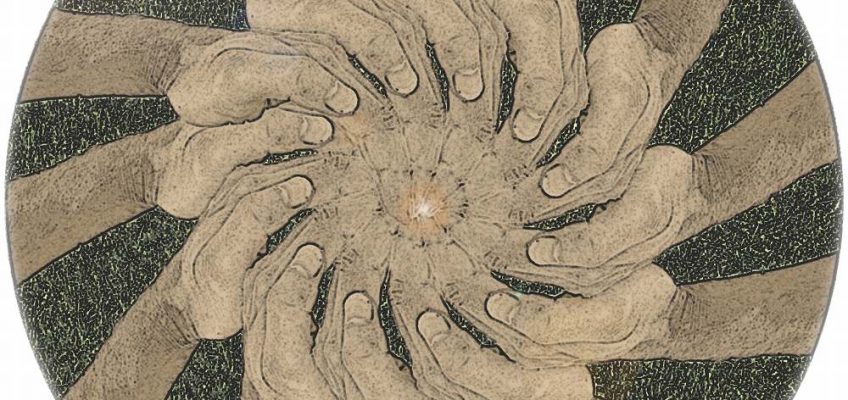
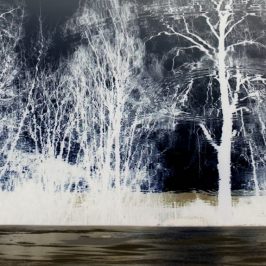

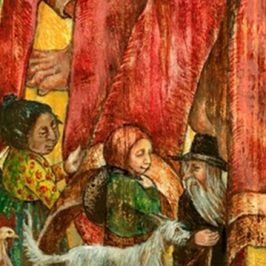
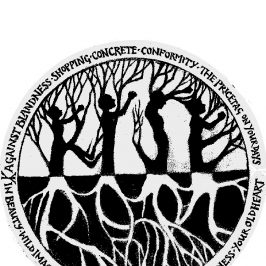
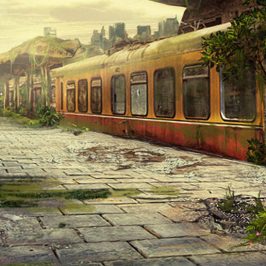
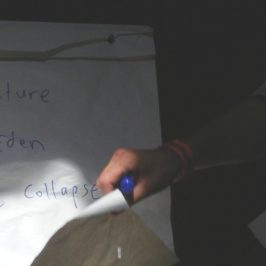
Leave a Reply